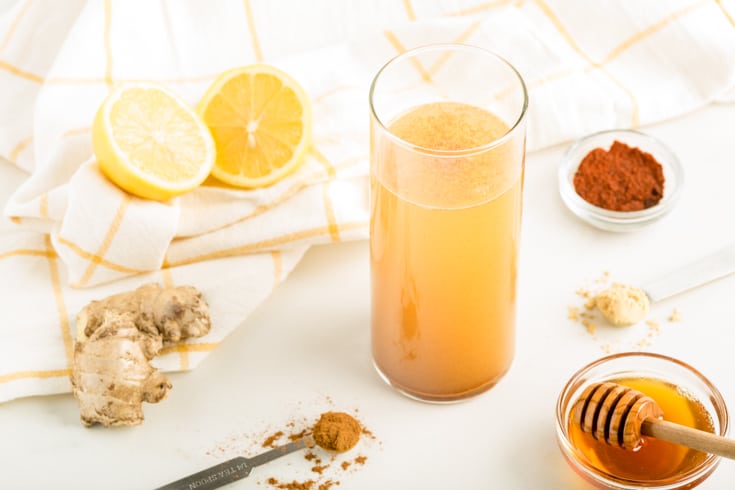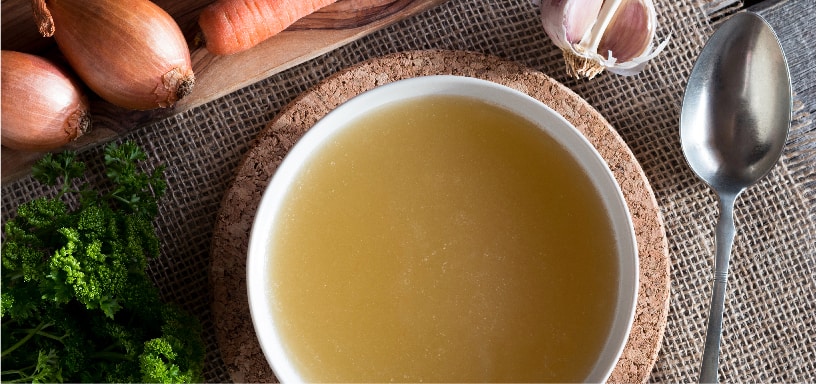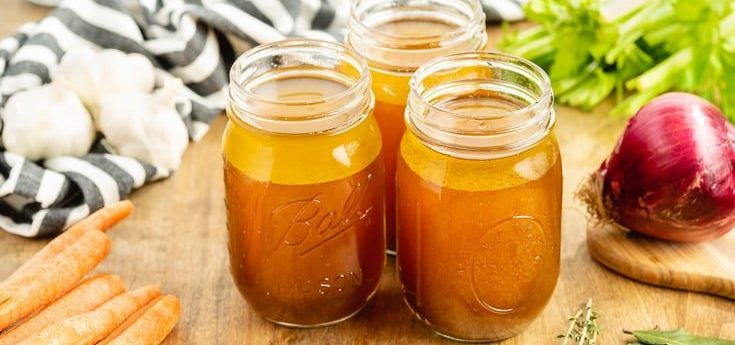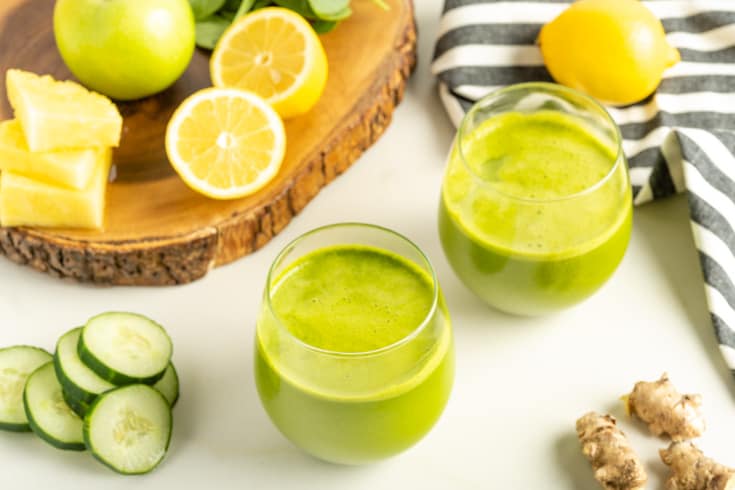What Is Pumpernickel Bread? Benefits, Nutrition & More
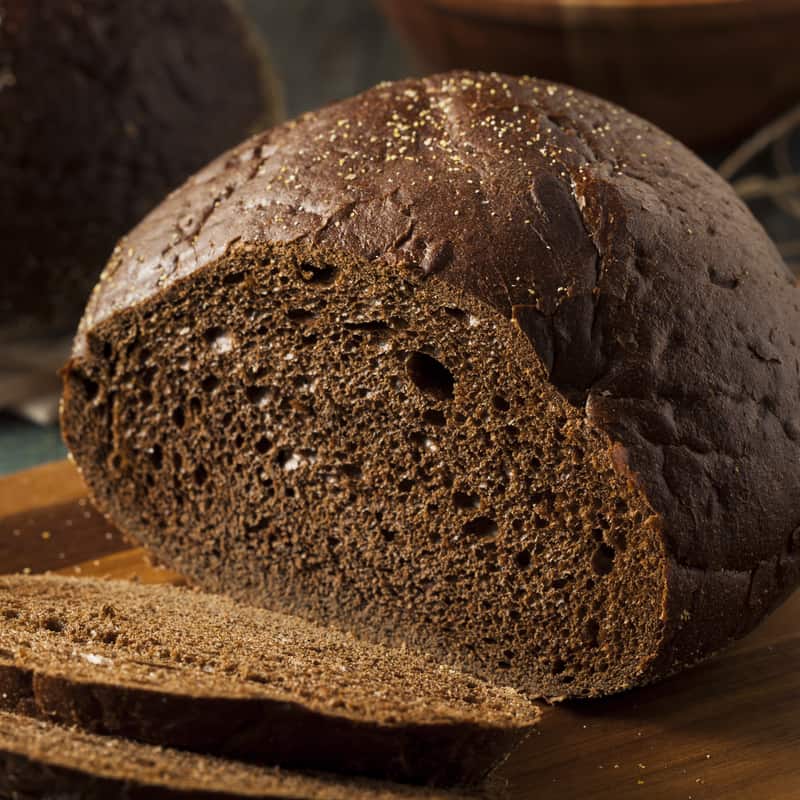
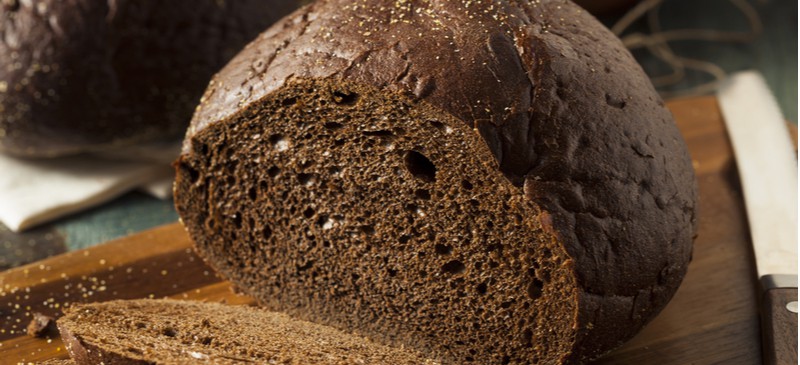
If you make an effort to choose the healthiest breads possible, or even to make your own bread at home, then sprouted grain breads (such as Ezekiel bread) are probably at the top of your list. While sprouted grains are definitely a good choice, other traditional breads, including pumpernickel and sourdough rye, can also provide you with many of the same nutrients.
Why is pumpernickel bread better for you than “white bread”? For reasons we’ll cover below, including its higher fiber content and lower glycemic index score, pumpernickel bread has a leg up on commercial, refined white breads.
This is especially true when it’s made using traditional methods of fermentation and long, slow baking at a low temperature.
What Is Pumpernickel Bread?
Pumpernickel is a type of dark brown bread that originated in Germany. Although there’s some debate about the origin of the name, pumpernickel in German basically translates to “hard to digest,” due to the density of the bread.
Traditionally, this type of bread been made with coarsely ground rye flour and rye grains, sometimes combined with whole wheat flour or some white flour.
Old-fashioned European/German pumpernickel is unique because it’s slowly baked for up to 24 hours at a low temperature. It’s traditionally been made with sourdough starter that has been slowly fermented, rather than with instant/baker’s yeast (although some yeast might also be used depending on the kind of bread).
The sourdough starter gives the bread a bit of a tangy taste and also contributes to its health benefits.
Today there are two main types of pumpernickel breads available: European and North American.
American pumpernickel tends to be made with yeast/leaveners and coloring and flavoring agents. It’s also more likely to include wheat flour and to be baked for less time at a higher temperature compared to European bread.
What is the difference between rye and pumpernickel?
Pumpernickel vs. rye, which is better? Both of these breads are made with different parts of rye grains.
Pumpernickel bread contains rye flour and rye kernels, which is why it tastes similar to rye bread. In fact, “pumpernickel flour” describes flour made from ground whole rye berries.
Regular rye bread is made from the endosperm of the rye berry, rather than whole rye berries.
The reason pumpernickel tastes a bit different than rye bread is due to the lengthy amount of time that it’s baked, which results in a sweet, dark chocolate, coffee-flavored bread.
This type of bread also has many things in common with other traditional brown breads made with whole grains that stem from Europe, including Rugbrød, Schwarzbrot and Jewish rye bread.
Why is pumpernickel bread so dark?
Pumpernickel’s color is due to its long, slow preparation in a low-temperature oven, plus from the dark endosperm of rye kernels and sometimes from the addition of whole wheat flour.
However, today, many commercially sold brown breads (especially in the U.S.) actually get their dark color from added ingredients, such as molasses (a type of brown sweetener), caramel, coffee or cocoa powder.
Rye bread can also be dark, depending on how much rye flour versus white wheat flour is used.
Nutrition Facts
Because it’s made with whole grains, pumpernickel is high in resistant starch and fiber. Rye grains are also a good source of nutrients, including manganese, selenium, phosphorus, B vitamins and copper.
One regular slice of pumpernickel bread (approximately 26 grams) has about:
- Calories: 65
- Total Carbohydrates: 12.4 g
- Fiber: 1.7 g
- Sugar: 0.1 g
- Total Fat: 0.8 g
- Saturated Fat: 0.1 g
- Polyunsaturated Fat: 0.3 g
- Monounsaturated Fat: 0.2 g
- Trans Fat: 0 g
- Protein: 2.3 g
- Sodium: 155 mg (7% DV*)
- Manganese: 0.3 mg (13% DV)
- Selenium: 6.4 mcg (12% DV)
- Copper: 0.1 mg (11% DV)
- Thiamine: 0.1 mg (8% DV)
- Riboflavin: 0.1 mg (8% DV)
- Folate: 24.2 mcg (6% DV)
- Niacin: 0.8 mg (5% DV)
- Phosphorus: 46.3 mg (4% DV)
- Iron: 0.7 mg (4% DV)
- Magnesium: 14 mg (3% DV)
*Daily Value: Percentages are based on a diet of 2,000 calories a day.
It also contains some vitamin E, vitamin K, vitamin B6, pantothenic acid, choline, calcium, potassium and zinc.
Health Benefits
What is pumpernickel bread beneficial for? Here are some of the health benefits associated with traditional whole grain pumpernickel breads:
1. Provides more filling fiber
Pumpernickel bread, a rich source of fiber, contains more filling resistant starch compared to breads made with wheat or barley flour.
Due to the concentration of both fiber and resistant starch, whole grain breads lead to steadier blood sugar levels after you eat them, since they are not digested as rapidly.
It’s been shown in a number of studies that whole kernel barley or rye products improve markers of glucose regulation and increase gut hormones involved in appetite and metabolic regulation.
One study found that whole grain rye bread decreased postprandial glucose and insulin responses, increased subjective satiety, and decreased desire to eat/feelings of hunger compared to refined wheat breads.
The fiber in this whole grain bread also supports gut health because it helps “feed” healthy bacteria living in the gastrointestinal tract. Additionally, it’s supportive of cardiovascular health since it helps support arterial function and healthy cholesterol levels.
2. Lower glycemic index score than white bread
Real pumpernickel is made with an acidic sourdough starter that helps break down some of the starch in the rye grains. It’s been demonstrated in studies that the combination of the starter and the soluble fiber in rye grains keeps the glycemic load of the bread lower than refined grain breads.
Research suggests that fiber-rich foods with low GI scores (due to their content of indigestible carbohydrates) can improve inflammatory markers and are associated with reduced risk of insulin resistance, type 2 diabetes and cardiovascular diseases.
When searching for healthy whole grain breads, look for those made with whole grain flours and ideally a sourdough starter, rather than from white wheat flour and instant yeast. Using yeast instead of sourdough starter causes the bread to have a higher GI score, since it lacks the acid that naturally lowers the starch content of the bread.
3. Good source of lignans and nutrients
Lignans are polyphenol compounds that are found in high-fiber foods, including seeds like flax and whole grains, such as rye and buckwheat. Once eaten, they are converted in the gastrointestinal tract into other beneficial compounds by bacteria living in the gut.
There’s evidence indicating that following their conversion, lignans have protective estrogen-like and antioxidant effects.
Lignan consumption has been shown to be protective against a number of health conditions, such as cancer, heart disease, osteoporosis and menopausal symptoms.
As mentioned above, whole grain pumpernickel flour can also provide nutrients like manganese, selenium, phosphorus, B vitamins and copper. These essential nutrients are supportive of functions including:
- thyroid and reproductive health
- nerve and muscle function
- cognitive health
- conversion of foods into energy
How to Make Your Own (Plus Buying Tips)
Look for real, traditional pumpernickel breads at artisan bakeries and German markets.
A good way to tell if the bread is made with whole grains is to pick it up and feel its weight. You’re looking for a bread that feels heavy for its size, which means it’s dense and probably contains more fiber.
Some bread makers feel that authentic pumpernickel is basically a pure rye bread and must be made of at least 90 percent coarsely ground rye flour or wholemeal rye grain. This results in a deeply colored, full-flavor bread that is filling and nutrient-dense.
To make your own at home, try this traditional pumpernickel bread recipe (adapted from 196Flavors):
Servings
Makes 2 large rectangular loaves
Ingredients
- 7 oz. organic rye berries
- 12.5 oz. organic dark rye flour
- 1.5 cups lukewarm water
- 3 tablespoons fed sourdough starter
- 12.5 oz. organic dark rye pumpernickel meal
- 12.5 oz. organic cracked rye
- 1 tablespoon salt
- 1⅓ to 1.5 cup lukewarm water
- 3.5 oz. imported golden syrup (or real maple syrup)
- 5.5 oz. dry-roasted unsalted sunflower seeds
Directions
- Put the berries in a small saucepan, and pour boiling water over them to cover by at least 1 inch. Cover, and let soak overnight.
- To make the levain/starter, mix the rye flour, water and sourdough starter in a small bowl until well combined. Cover, and let it rest overnight in a warm place.
- Add enough water to the soaked rye berries so there is about three times as much water a berries. Bring to a boil, then reduce the heat and simmer, covered, for about 1 hour or until the berries are soft. Drain the cooked berries, and set aside to cool.
- In a large bowl, mix the dark rye pumpernickel meal, cracked rye and salt. Add the levain and 1⅓ cup (300ml) water. Mix until well combined.
- Add the cooked berries, syrup and sunflower seeds. Knead the dough using the dough hook of an electric mixer or your hands. Dust with rye flour, and cover. Let rest in a warm place for 30 minutes.
- Grease 2 loaf tins.
- Knead the dough on a lightly floured surface to remove any excess air. Divide the dough into equal portions, and place it into your baking pans. Grease small pieces of aluminum foil, and cover the pans, greased side down. Let rest in a warm place for 2 to 3 hours.
- Preheat the oven to 300F/150C. Remove the aluminum foil. Adjust the oven rack to the lowest setting. Place the pans in the casserole, and place it on the oven rack. Pour about 1 inch of hot water into the casserole. Place the lid on the casserole, and bake for 1 hour at 300F/150C. Reduce the heat to 212F/100C, and bake for 13 more hours.
- Add hot water to the casserole every few hours to maintain the water level. At the end of the baking time, turn off the oven, and leave the casserole in the oven for 1 hour. Then take the pans out, and cool on the counter for another 30 minutes. Let them cool completely, then wrap them in wax paper or parchment paper, and place them in freezer bags.
What are some ways to enjoy this bread?
- Top a slice with smoked salmon, cream cheese and sliced onion.
- Melt some aged cheddar cheese on top, and add some tomato and pepper.
- Try making an open-faced sandwich with mustard and roast beef.
Risks and Side Effects
Rye is not a gluten-free grain — therefore this type of bread is not recommended for anyone with gluten intolerance/sensitivity and should be strictly avoided by those with celiac disease.
Bread, even whole grain breads, can be calorie-dense foods. As such, limiting your portion size is a good idea.
Try sticking to one to two slices per day, ideally paired with a healthy serving of veggies, protein and fat to make you feel more satisfied.

